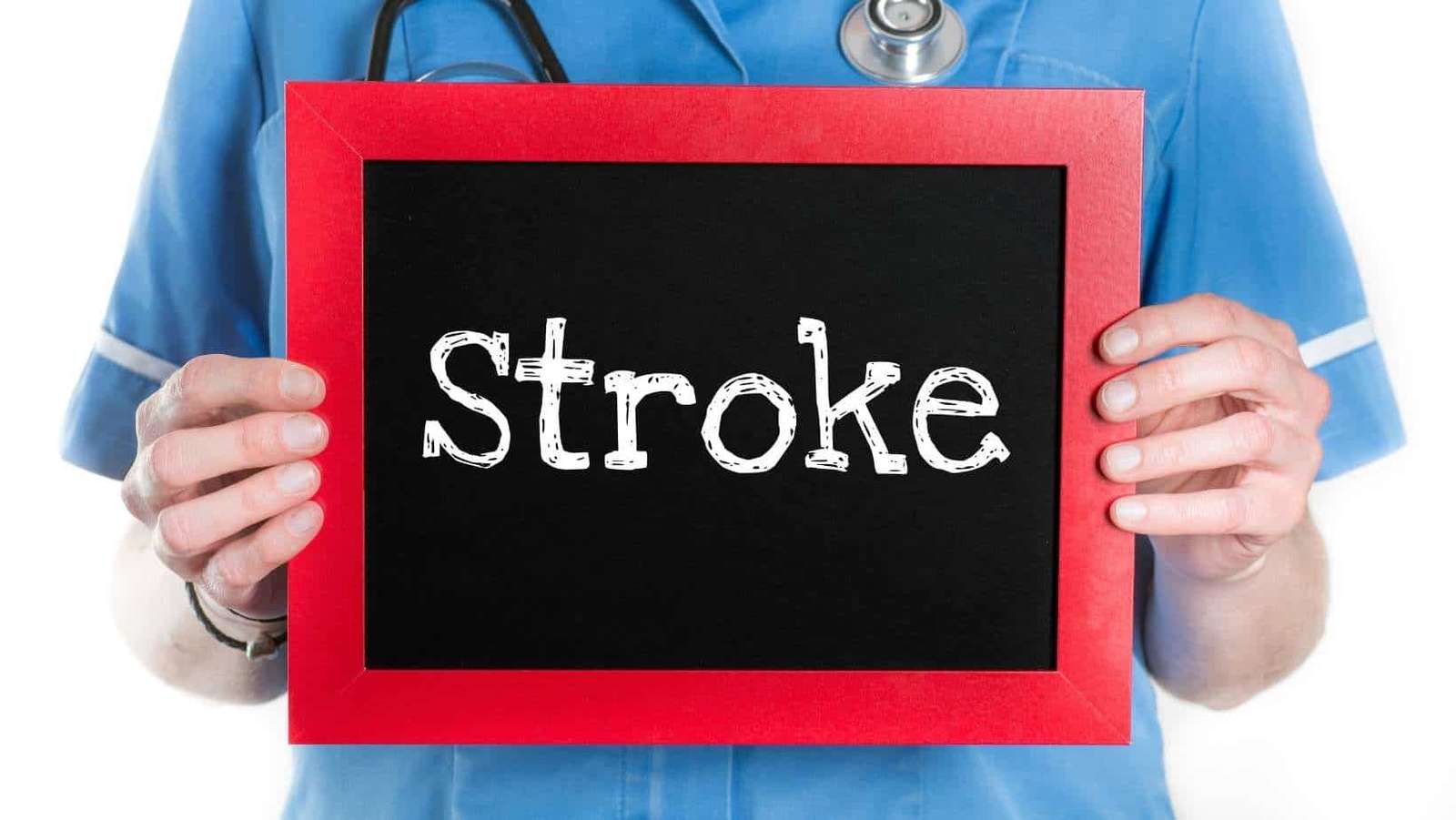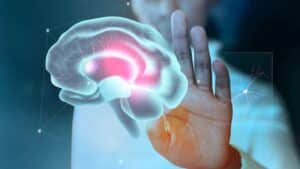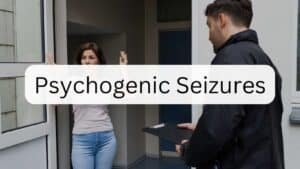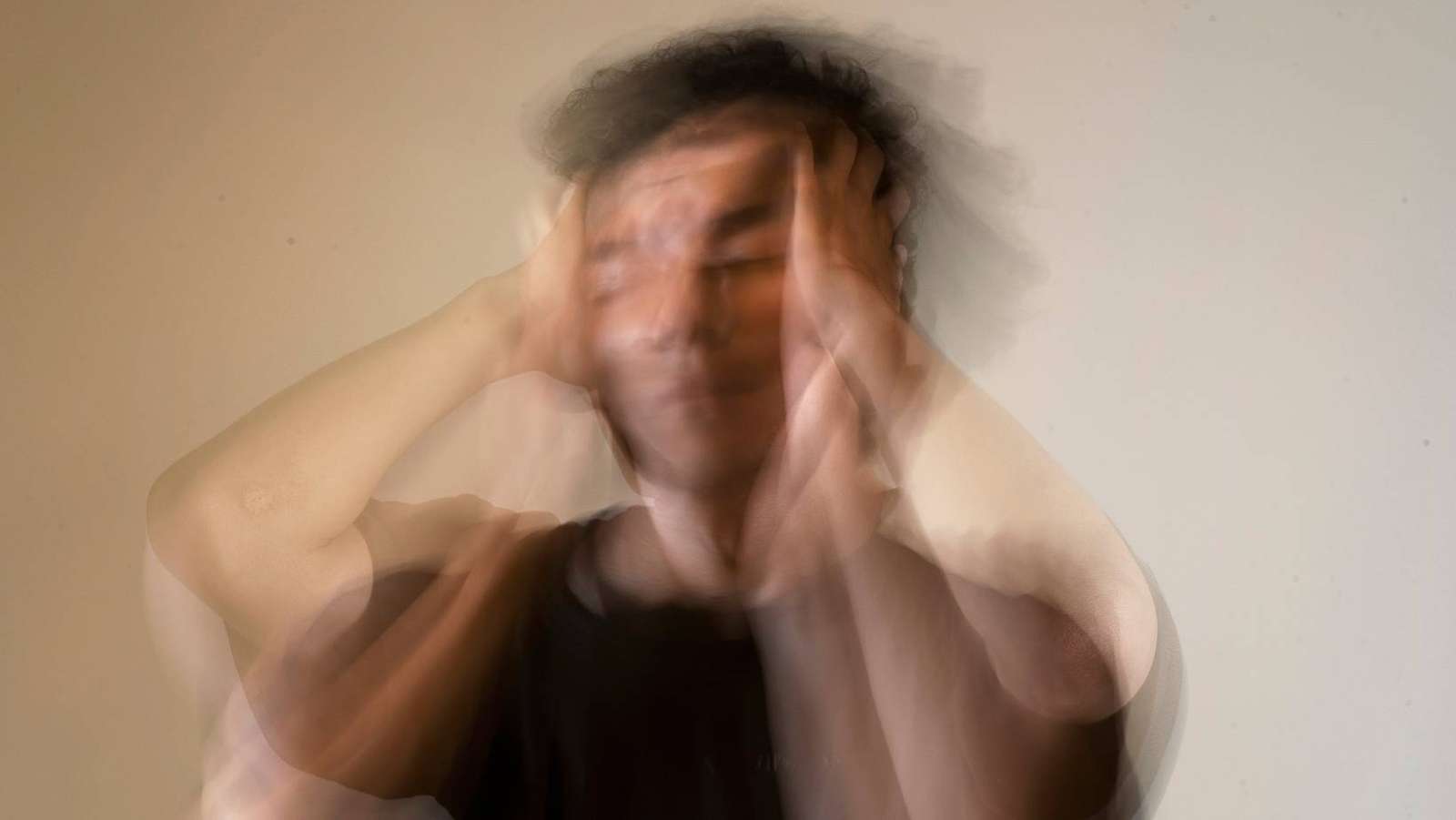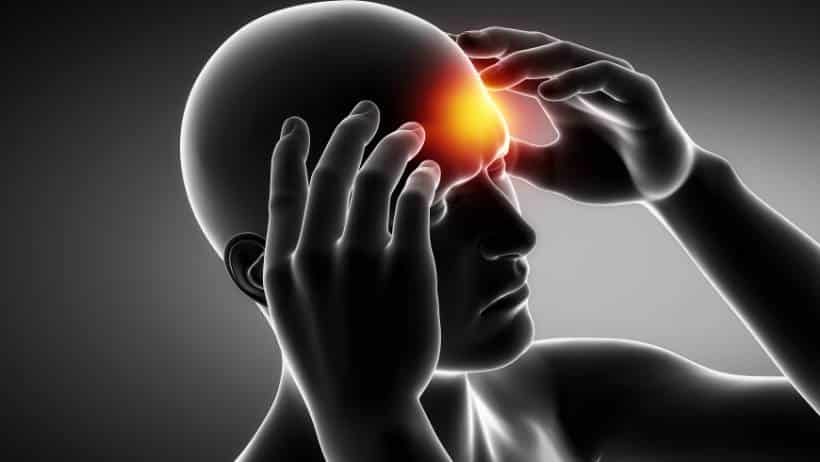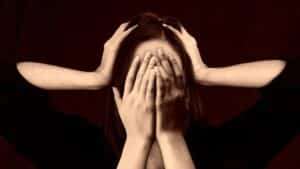What is a Stroke?
Introduction to What is a Stroke
Imagine your brain as the command center of your body. It controls everything you do, from thinking and moving to breathing and feeling. Now, picture this intricate control center being suddenly disrupted, leading to a loss of function or, in some cases, a life-threatening situation. It is what happens when someone experiences a stroke. There are more than a trillion brain neurons. When stroke occurs, these neurons die rapidly, leading to permanent neurological deficits in most cases. Unlike the heart, the brain is not forgiving, and the individual can become dependent for life.
What Is a Stroke?
A sudden onset of neurological injury leads to the death of brain cells. Our brain is less than 1 % of our body weight and receives more than 20 % oxygen supply. It is, therefore, a very active organ that cannot tolerate any decrease in oxygen. When a stroke disrupts the blood supply to the brain, the neurons die rapidly. There are three different ways a stroke may happen.
What is a Stroke Types?
Ischemic Stroke: This is the most common type of stroke, accounting for about 87% of all cases. It happens when a blood clot, known as a thrombus, forms in a blood vessel within the brain or when a clot forms elsewhere in the body and travels to the brain, blocking a blood vessel. When the brain doesn't receive the blood it needs, it leads to neuronal death.
Suppose the stroke symptoms last for less than 24 hours, and the patient recovers fully without deficits. In that case, it's called a mini-stroke or transient ischemic attack (TIA). Such events may be accompanied by loss of vision, weakness on one side of the body, slurred speech or even loss of consciousness. Patients recover completely after the attack. This event is often followed by a larger event or a major stroke over the following weeks. Hence, it should not be taken lightly or ignored.
Hemorrhagic Stroke: This type of stroke is less common but more severe. It occurs when a blood vessel in the brain ruptures, causing bleeding in the brain. The excess blood puts pressure on brain tissue and damages brain cells. Due to pressure, the brain cells get strangulated and die.
Subarachnoid Hemorrhage: This is the most lethal kind of stroke where a weak point or a balloon forms (aneurysm) inside the blood vessel and ruptures. The blood is spilled all around the brain, leading to severe brain damage and sudden death. 25% of patients with subarachnoid hemorrhage don’t visit the hospital.
What Is a Stroke and How to Recognize Its Symptoms?
Recognizing the signs and symptoms of a stroke is crucial because timely intervention can make a huge difference in the outcome. Remember the acronym "FAST."
Face: Ask the person to smile. Does one side of their face droop?
Arms: Have them raise both arms. Is one arm weak or drifting downward?
Speech: Ask them to repeat a simple phrase. Is their speech slurred or strange?
Time: If you observe any of these signs, not the time and rush to the hospital.
Other common symptoms of a stroke may include sudden confusion, severe headache, trouble seeing in one or both eyes, difficulty walking, dizziness, and loss of balance or coordination.
Less than 1 % of patients return to the hospital in time for proper stroke treatment. Because people tend to ignore their symptoms or are unaware of their severity, they pay close attention to the weakness and numbness if they occur suddenly.
What Is a Stroke Causes?
High Blood Pressure: Hypertension is one of the leading risk factors for strokes.
Atrial Fibrillation: In this condition, a clot from the heart can travel to the brain and cause a stroke.
Smoking: Smoking damages blood vessels and can lead to the build-up of fatty deposits in the arteries, increasing the risk of clot formation.
Diabetes: People with diabetes have a higher risk of developing vascular problems, which can increase the likelihood of stroke.
High Cholesterol: Bad cholesterol or LDL has been proven to be a major risk factor for stroke.
Obesity: Carrying excess weight increases the risk of various health problems, including hypertension, diabetes, and heart disease, all stroke risk factors.
Family History: If you have a family history of stroke, your risk may be higher.
Age: As we age, the risk of stroke increases, especially after age 55. However, up to 35 % of strokes occur before the age of 35 years.
What Is a Stroke and How Can You Minimize the Risk?
Control Blood Pressure: Regular check-ups with your doctor, medication, and a healthy lifestyle can help manage hypertension. Aim for systolic BP of less than 130.
Quit Smoking and nicotine products: This is a given and extremely important.
Maintain a Healthy Diet: A diet low in saturated fats salt, and rich in fruits, vegetables, and whole grains can help prevent strokes.
Exercise Regularly: Physical activity improves overall cardiovascular health, helping to keep blood vessels clear and flexible.
Manage Diabetes: If you have diabetes, work with your healthcare provider to check your blood sugar levels.
Limit Alcohol Intake: Moderation is the key.
Medication Compliance: If your doctor prescribes medication for conditions like atrial fibrillation or high cholesterol, be sure to take it as directed.
What is a Stroke Treatment?
Every minute the brain is devoid of oxygen, 1.9 million neurons or brain cells die. Hence, it is very important that treatment is given as soon as possible.
Intravenous clot buster: In cases of ischemic stroke, a medication called tissue plasminogen activator (tPA) can be administered within the first 4.5 hours from onset. There are indications where this drug is very helpful, and then there are cases when this drug cannot be given. However, this drug is not given after 4.5 hours from the stroke onset.
Mechanical Thrombectomy: This is a procedure where an interventional neurologist removes the brain clot in the brain. It is a minimally invasive procedure and can be done under local anesthesia. This procedure can be performed for up to 24 hours; however, the sooner it is done, the better the outcome is.
Physical and Occupational Therapy: This forms the backbone of the What is a Stroke recovery after the initial treatment. It needs to be started as soon as the patient is stable. We recommend starting therapy on day two itself if the condition permits. Patients who receive aggressive physical therapy do much better than those who do not.
Conclusion
What is a Stroke? Stroke is a serious illness and is the number one cause of disability in our country. Due to a lack of awareness, people don’t get treated for stroke and suffer throughout life. This disease can be treated and prevented. Patients who get treated in time and get physical therapy can return to their normal lives way sooner than the ones who do not.
Epilepsy Demystified: Types, Seizure Experiences, and the Importance of Support
Epilepsy is a common neurological condition affecting millions worldwide, with over 10 million individuals grappling with its complexities. Despite its prevalence, significant confusion surrounds the different forms of epilepsy and Types of Seizures experiences of those living with seizures. In this comprehensive blog, we aim to unravel the mysteries of epilepsy by discussing its various types of seizures and offering insights into what it feels like to experience a seizure. Join us on a journey to understand epilepsy better and appreciate the critical role of emotional support.
Types of Seizures
Epilepsy presents itself in several forms, each possessing its unique characteristics. We primarily categorize these forms into two:
Generalized Seizures: This category encompasses types of seizures involving both sides of the brain. Individuals with generalized epilepsy often endure loss of consciousness, muscle stiffness, or uncontrollable movements. Some common types of generalized epilepsy include:
- Tonic-Clonic Seizures: These types of seizures are perhaps the most recognized. They involve sudden muscle stiffening (tonic phase) followed by jerking movements (clonic phase), often resulting in a loss of consciousness.
- Absence Seizures: These types of seizures episodes are brief periods of staring into space, sometimes mistaken for daydreaming. Individuals experiencing an absence seizure may not remember the episode. These are more frequently observed in children.
Myoclonic Seizures: These types of seizures trigger sudden, violent, and jerky muscle contractions. They are usually brief and can affect various parts of the body.
Focal (Partial) Epilepsy: When a types of seizures affects only a small part of the brain, referred to as a focus, it is called a focal seizure. Symptoms can vary depending on the specific brain region affected:
- Simple Partial Seizures: These types of seizures may involve altered emotions such as anxiety or depression and unusual sensations like tingling, numbness, sweating, or twitching in specific body parts. Importantly, individuals remain conscious during partial seizures, though they may not recall the episode afterward.
- Complex Partial Seizures: In these types of seizures episodes, seizure activity spreads from one focus to a larger part of the brain, leading to altered consciousness and repetitive, uncontrolled behaviors. Individuals may have no memory of the episode following a complex partial seizure.
What Does a Seizure Feel Like?
Understanding the seizure experience is essential, as it helps us offer support and empathy to those living with epilepsy. It's important to recognize that the nature of a seizure can vary from person to person. However, here are some general insights into what individuals with epilepsy may feel.
Confusion and Fear: Many people with epilepsy report feeling confused, frightened, or disoriented during a seizure. The unpredictability of seizures and uncertainty about how others will react can create anxiety. Seizures often involve a loss of control over one's body, which can lead to injuries if precautions aren't taken. Therefore, laying the person down in a safe and comfortable environment during a seizure is crucial.
Memory Gaps: After some seizures, individuals may experience gaps in their memory. They might not remember what happened during the seizure or the moments leading up to it.
Physical Symptoms: Depending on the type of seizure, the physical symptoms can vary. They may include muscle stiffness, jerking movements, or unusual sensations as part of the experience.
Emotional Toll: Living with epilepsy can take an emotional toll. The unpredictability of seizures and potential stigma from others can lead to feelings of anxiety, depression, or isolation. It's important to provide emotional support during these challenging times.
Aura or Warning Signs: Some individuals with epilepsy experience a warning sign or aura before a seizure. These auras can take various forms, from visual disturbances to strange smells or tastes. Auras provide a brief opportunity to prepare for a seizure or seek help.
Recovery Period: Individuals often require some time to recover after a seizure. They may feel tired, confused, or experience a headache. Offering emotional support during this post-seizure period is essential.
Support and Awareness
Epilepsy is not just a neurological condition; it is a disease that carries social and psychological dimensions. Unfortunately, patients with epilepsy are often subjected to discrimination and are sometimes considered outcasts. It can create a hostile environment for them in the workplace and at home.
Promoting awareness is crucial to eliminate the social stigma associated with epilepsy and to ensure that patients are treated with the dignity and respect they deserve. People living with epilepsy can lead productive, fulfilling lives just like anyone else.
Numerous organizations are dedicated to supporting individuals with epilepsy, providing valuable resources and assistance. Additionally, local support groups offer a sense of community and a safe space for sharing experiences.
In summary, epilepsy is a complex condition that extends beyond the physical manifestations of seizures. Support and awareness are fundamental in improving the lives of individuals living with epilepsy and in creating a more inclusive and understanding society.
The Difference Between A Seizure and Convulsion
The difference between a Seizure and convulsion
Seizures are sudden outbursts of electrical activity in the brain, leading to vigorous body and extremity jerky movements. The eyes may turn to one side or roll upwards, frothing from the mouth, tongue biting, the passage of urine, or stools may happen, leaving the patient exhausted for the next few hours. Seizure and convulsion do not harm the brain cells or neurons if they last 5 to 10 seconds; however, repeated seizures and those lasting more than 5 minutes can damage the brain.
Convulsions are when there are vigorous jerky movements of the body. There may be a loss of consciousness as well. Not all seizures are convulsive, and not all convulsions may be seizures.
Conditions that may cause convulsions but are not associated with epilepsy are high fever, cardiac syncope, heat stroke and low blood sugar.

Causes of Seizures
Brain Stroke
A brain stroke, which can be either ischemic (caused by a blocked blood vessel) or hemorrhagic (caused by bleeding in the brain), can disrupt normal brain function. The sudden interruption of blood flow or the presence of blood in the brain tissue can lead to abnormal electrical activity, triggering seizures.
Meningitis
Meningitis is an inflammation of the meninges, the protective membranes covering the brain and spinal cord. In some cases, the infection-causing meningitis can irritate the brain, leading to seizures. It is more common in cases of bacterial or viral meningitis.
Encephalitis
Encephalitis is the inflammation of the brain itself, often caused by viral infections. The rash can disrupt normal brain function and result in seizures, a neurological symptom of the disease.
Brain Trauma
Head injuries, such as concussions or severe trauma, can damage brain tissue and provoke seizures. The risk of seizures following a brain injury depends on the severity and location of the trauma.
Intracranial Hemorrhage
Intracranial hemorrhage refers to bleeding within the brain, which various factors, including high blood pressure, aneurysms, or other vascular abnormalities, can cause. The presence of blood in the brain can trigger seizures.
Subarachnoid Hemorrhage
A subarachnoid hemorrhage is bleeding that occurs in the space between the brain and the surrounding membranes. This condition can lead to seizures due to irritation and pressure changes in the brain.
Genetic Diseases
Some genetic disorders can predispose individuals to seizures. Epilepsy is one of the most well-known genetic conditions associated with recurrent seizures. These seizures are caused by inherited abnormalities in the brain's electrical activity.
Toxins
Exposure to certain toxins and chemicals can disrupt normal brain function and provoke seizures. It can result from environmental toxins, drug abuse, or even chemical imbalances in the body.
Drugs
Some prescription medications, as well as recreational drugs and alcohol, can lower the seizure threshold, making it more likely for a person to experience seizures. In some cases, withdrawal from addictive substances can also trigger seizures.
It's important to note that the manifestation of seizures can vary greatly depending on the cause, the individual's overall health and the specific brain regions affected. Accurate diagnosis and appropriate treatment are crucial for managing seizures effectively. Suppose you or someone you know is experiencing seizures. In that case, seeking medical attention to determine the underlying cause and establish an appropriate treatment plan is essential.

What are the triggers for Seizure and convulsion?
Stress
Stress is a common trigger for seizures in many individuals with epilepsy. The exact mechanisms by which stress induces seizures are not entirely understood. Still, the body's stress response is believed to alter brain activity and lower the seizure threshold. Finding effective stress management techniques can be crucial for those with epilepsy.
Drinking Alcohol or Alcohol Withdrawal
Alcohol consumption can affect the brain's electrical activity. While some people may experience seizures during or after excessive alcohol intake, others may have seizures during alcohol withdrawal. The abrupt cessation of alcohol, especially in individuals with a history of heavy drinking, can lead to a condition known as alcohol withdrawal seizures.
Dehydration or Missing Meals
Dehydration and low blood sugar (hypoglycemia), which can occur when skipping meals, can lower the seizure threshold. Staying well-hydrated and maintaining a balanced diet can help reduce the risk of seizures.
Exposure to Toxins or Poisons
Various toxins and poisons can disrupt normal brain function and trigger seizures. These include lead poisoning, carbon monoxide exposure, illicit drugs, and high doses of certain prescription medications. Avoiding exposure to such substances is essential for seizure management.
Hormonal Changes Associated with the Menstrual Cycle
Hormonal fluctuations during the menstrual cycle can affect some women with epilepsy, leading to what are known as catamenial seizures. The exact relationship between hormones and seizures is complex and varies among individuals. Some women may experience increased Seizure and convulsion activity during specific phases of their menstrual cycle.
Sleep Deprivation
Lack of sleep or irregular sleep patterns can increase the risk of Seizure and convulsion in individuals with epilepsy. Sleep plays a crucial role in maintaining a stable electrical activity in the brain. Adequate sleep is essential for seizure management.
Visual Stimulation
Certain types of visual stimulation, such as flashing lights, intense graphic patterns, or rapidly changing images, can trigger Seizure and convulsion in individuals with photosensitive epilepsy. This condition is characterized by a heightened sensitivity to specific visual stimuli, and it's essential to avoid such triggers to prevent Seizure and convulsion.
What to do at home with Seizure and convulsion
- When a Seizure and convulsion occurs, the main goal is to protect the person from injury.
- Try to prevent a fall. Lay the person on the ground in a safe area. Clear the area of furniture or other sharp objects.
- Cushion the person's head.
- Loosen tight clothing, especially around the neck.
- Turn the person on their side. If vomiting occurs, this helps ensure the vomit is not inhaled into the lungs.
- Look for a medical ID bracelet with Seizure and convulsion instructions.
- Stay with the person until they recover or until professional medical help arrives.
Things friends and family members should NOT do
- DO NOT place anything between the person's teeth during a Seizure and convulsion (including your fingers).
- DO NOT attempt to hold the person's tongue.
- DO NOT restrain (try to hold down) the person.
- DO NOT attempt to hold the person's tongue.
- Please DO NOT move the person unless they are in danger or near something hazardous.
- DO NOT try to make the person stop convulsing. They have no control over the Seizure and convulsion, are not aware of what is happening at the time.
- DO NOT give the person anything by mouth until the convulsions have stopped and the person is fully awake and alert.
- DO NOT start CPR unless the Seizure and convulsion has stopped and the person is not breathing or has no pulse.
References
- https://www.ninds.nih.gov/health-information/disorders/epilepsy-and-seizures#toc-how-can-i-or-my-loved-one-live-with-epilepsy-and-seizures-
- https://www.mountsinai.org/health-library/symptoms/seizures
Understanding Psychogenic Seizures: What You Need to Know
Psychogenic Seizures: What You Need to Know?
Psychogenic seizures, previously referred to as pseudoseizures, are perplexing events that mimic epileptic seizures but are not caused by abnormal electrical brain activity. These episodes have long been linked to hysteria and psychiatric conditions, making them a fascinating subject of study.
These episodes can be challenging to understand, but delving into the complexities of psychogenic seizures is essential for anyone seeking a more profound comprehension of this enigmatic condition.
In this blog, we will break down what psychogenic seizures are, how they differ from epileptic seizures, and what the best psychogenic seizures treatment options look like today. We’ll keep things clear, simple, and supportive.
What are Psychogenic Seizures?
Seizures are sudden outbursts of electrical activity in the brain, which leads to vigorous body and extremity jerky movements. The eyes may turn to one side or roll upwards, frothing from the mouth, tongue biting, the passage of urine, or stools may happen, leaving the patient tired for the next few hours.
Psychogenic seizures, formerly known as pseudo seizures or non-epileptic seizures, mimic the physical characteristics of epileptic seizures but do not represent the manifestation of abnormal excessive synchronous cortical activity, which defines epileptic seizures. They are called psychogenic nonpileptic seizures (PNES) nowadays.
It is not always easy to differentiate between epileptic and non-epileptic seizures just by looking at them, and most of the time, the neurologists will have to rely on an electroencephalogram (EEG) to make the diagnosis. Due to the stigma associated with epilepsy and mental diseases, these often remain undiagnosed for years.
Difference Between Psychogenic and Epileptic Seizures
Many people think a seizure is always caused by epilepsy. That’s not true. Here is a simple comparison:
| Feature | Psychogenic Seizures | Epileptic Seizures |
|---|---|---|
| Cause | Emotional stress or trauma | Electrical activity in the brain |
| EEG result | Normal during episode | Abnormal spikes during episode |
| Triggers | Stress, trauma, emotions | Sleep loss, flashing lights, illness |
| Awareness during episode | Often preserved | May lose awareness |
| Post-seizure confusion | Usually absent | Common |
| Treatment | Therapy, stress relief | Anti-seizure medications |
Psychogenic seizures fall under Functional Neurological Disorder (FND), a condition where the brain sends the wrong signals to the body due to stress, not injury.
Causes of Psychogenic Seizures
Psychological Triggers
One of the biggest reasons for psychogenic seizures is unresolved emotional trauma.
- Up to 70% of people with PNES have a past history of trauma or abuse (Epilepsy Foundation).
- Common triggers include physical abuse, sexual trauma, or witnessing violence.
- In some cases, ongoing anxiety or high stress at home or work can also lead to episodes.
Even though the cause is psychological, the body reacts in a very real and physical way. These are not fake or made-up.
Underlying Mental Health Conditions
Mental health conditions can often show up in unusual ways. In psychogenic seizures, the brain copes with emotional stress by creating seizure-like movements.
- People with dissociative disorders may feel detached or zoned out during episodes.
- Personality disorders or severe anxiety may cause emotional reactions to explode physically.
- These overlaps are common and can make diagnosis harder.
Why the Brain Responds This Way?
Think of it like a circuit breaker. When too much emotional stress builds up and there's no outlet, the brain trips the switch and the result is a seizure.
- The mind-body disconnect happens when emotional pain has nowhere to go.
- This overload leads the body to shut down, freeze, or twitch as a survival response.
- It’s the body’s way of screaming when words can’t explain the pain.
Diagnosing Psychogenic Seizures
Distinguishing psychogenic seizures from epileptic seizures can be challenging, even for experienced neurologists. Several factors help us diagnose psychogenic seizures. Movements such as pelvic thrusting, head nodding, waxing and waning consciousness, and shaking movements of the belly or chest are associated with pseudo seizures. In most of the seizure cases, the eye remains open. Tightly closed eyes or resisting eye opening during an event suggest pseudo seizures.
It is helpful if the events are recorded over a cell phone. These can be studied later to look for clues and make a diagnosis.
Electroencephalogram (EEG) and video EEG Monitoring: One of the most valuable tools in diagnosing psychogenic seizures is video electroencephalogram (EEG) monitoring. During this test, a patient is observed with continuous video recording while monitoring brain activity with an EEG. It allows us to correlate physical symptoms with brain activity, helping us identify whether the seizures are psychogenic or epileptic.
Psychological Assessment: A psychiatric evaluation can uncover underlying emotional and psychological factors contributing to the seizures. Identifying and addressing these factors are crucial steps in managing psychogenic seizures.
Differential Diagnosis
Certain diseases, although not psychogenic, can present, like pseudoseizures or seizures. These are vertigo, syncope, complex partial and absence seizures.
Psychogenic Seizures Treatment: What Works?
Cognitive Behavioral Therapy (CBT)
CBT is the first choice for psychogenic seizures treatment.
- CBT teaches coping skills and helps patients manage emotional triggers.
- Studies show that CBT reduces seizure episodes by up to 82%.
- Therapy focuses on changing negative thought patterns into helpful ones.
Other Psychotherapy Approaches
Some people may need deeper trauma-based work.
- Trauma-focused therapy helps people process past abuse or fear.
- EMDR (Eye Movement Desensitization and Reprocessing) is used to handle PTSD.
- Resolving trauma reduces the brain’s need to express stress through seizures.
Medications (If Any)
Many patients are wrongly put on anti-seizure drugs. That doesn't help.
- Anti-seizure meds are not effective for psychogenic seizures.
- Doctors may prescribe SSRIs (like fluoxetine) for anxiety or depression.
- These meds help calm the mind and reduce emotional overload.
Lifestyle Support & Stress Management
Healing takes more than just therapy.
- Mindfulness practices like breathing exercises and yoga help the brain calm down.
- Writing in a journal helps process emotions that feel stuck.
- Family education is crucial—when loved ones understand the condition, recovery improves.
The Importance of Compassion
It's essential to approach individuals with psychogenic seizures with empathy and understanding. These individuals often struggle with complex emotional issues, and their seizures are their way of coping. Encouraging open communication and seeking professional help is the first step toward recovery.

Breaking the Stigma
Stigma can be a significant barrier for individuals with psychogenic seizures. Friends, family, and even healthcare providers may misunderstand the condition, leading to feelings of shame and isolation. Breaking this stigma is crucial for the well-being of those affected.
Dr. Chandril Chugh’s Advice for You
If you or your loved one is dealing with psychogenic seizures, don’t blame yourself. These are not a sign of weakness. They’re your brain asking for help.
Getting the right diagnosis is the first step to healing. At our clinic, we see people recover every day. Let us help you.
Book a one-on-one consultation with Dr. Chandril Chugh today.
References:
1.Huff JS, Murr N. Psychogenic Nonepileptic Seizures.
FAQ
Can psychogenic seizures be cured?
Yes. Many people recover fully with the right psychogenic seizures treatment like therapy and emotional support. It's important to act early. If you or a loved one is facing this, book a consultation with Dr. Chugh.
What is the best treatment for psychogenic seizures?
CBT (Cognitive Behavioral Therapy) is the most effective. It directly addresses stress and trauma. Medication for related issues (like anxiety) may also help. Always consult a neurologist and a psychologist.
How long do psychogenic seizures last?
Each episode may last a few seconds to several minutes. Some can even go on for over 30 minutes. The pattern differs from person to person.
Are psychogenic seizures real or fake?
They are 100% real. Just because they start in the mind doesn’t mean they are imagined. The body reacts physically. The pain, fear, and confusion are real.
How do you differentiate psychogenic and epileptic seizures?
Video EEG is the best tool. If there’s no abnormal brain activity during the seizure, it’s likely psychogenic. Also, emotional triggers and response to suggestion are clues.
Can you have both epilepsy and psychogenic seizures?
Yes. Some people have both types. This makes diagnosis tricky and requires expert care. Book an appointment with Dr. Chugh to get the right assessment.
The Profound Impact: How Seizures Affect the Brain and Your Daily Life
How seizures affect the brain, professional and sexual Life
In India, the prevalence of epilepsy is a growing concern, with over 1 million individuals currently affected, and this number continues to rise year after year. Epilepsy is characterized by repeated seizures stemming from abnormal electrical activity in the brain. These abrupt surges of electrical activity can have multifaceted implications for the brain, subsequently impacting various aspects of one’s professional and sexual well-being. Let’s delve into this intricate relationship and understand the ramifications.
Seizures manifest as sudden bursts of electrical activity within the brain, often leading to intense, uncontrolled movements of the body and extremities. These episodes may involve the eyes turning to one side, rolling upwards, frothing at the mouth, tongue biting, or even involuntary passage of urine or stools. Following a seizure, individuals often experience profound fatigue and exhaustion that can persist for several hours.
What makes it even more concerning is the potential for harm to the brain during these episodes. While brief seizures lasting between 5 to 10 seconds may not significantly affect neurons, any seizure activity extending beyond 5 minutes can harm the brain.
The critical question arises: which areas of the brain are most vulnerable to the effects of seizures? According to the extensive body of literature on epilepsy, certain brain regions are particularly susceptible to injury during seizure activity. These regions include the hippocampus, entorhinal cortex, amygdala, thalamus, and other limbic structures. Collectively, these areas govern functions such as memory, olfaction (smell), fear, anxiety, and sensory inputs.
Understanding how it affect these vital brain regions is pivotal in comprehending the broader consequences for professional and sexual aspects of life. Epilepsy can lead to cognitive impairments, memory difficulties, emotional challenges, and even impact one’s ability to engage in fulfilling sexual relationships. Individuals living with epilepsy must seek comprehensive care and support to mitigate these effects and enhance their overall well-being.
How Seizures Affect The Professional Life
Let’s discuss the effect seizures or epilepsy can have on the professional Life of a patient.
Employment Opportunities: Due to the risk of losing consciousness, certain jobs are out of bounds for patients with epilepsy. Some jobs may have restrictions or requirements regarding a person’s ability to manage seizures. For example, certain roles involving heavy machinery or driving may be off-limits to individuals with uncontrolled seizures. Pilots, locomotive drivers, high-altitude trekkers and divers should be seizure-free.
Social Stigma: Unfortunately, epilepsy is not just a neurological disease but also a social disease. Lack of awareness leads to discrimination against these patients at work and in social lives. People tend to attribute various derogatory terms and taboos to them. They believe that epilepsy is completely misplaced if infectious or a paranormal activity.
Absenteeism: Frequent seizures, however, can lead to missed workdays, affecting job performance and career advancement. This can lead to stress and financial strain.
Cognitive Impairment: Many individuals with seizures take medications to manage their condition. Some medicines may have side effects, such as drowsiness or mental impairment, impacting job performance.
Stress and Anxiety: The fear of having a seizure at work can cause significant stress and anxiety, further affecting job satisfaction and performance.
It’s important to note that not all individuals with seizures face these challenges, and many lead successful professional lives with proper management and support.
Tips for Managing Seizures in the Workplace
Open Communication: Discuss your condition with your employer and colleagues to foster understanding and support. Make sure you take medications as prescribed by a neurologist.
Accommodations: Explore reasonable workplace accommodations, such as flexible schedules or adjustments to job responsibilities.
Medication Management: Work closely with your neurologist to find the right medication and dosage that minimizes side effects while effectively controlling seizures.
Stress Reduction: Practice stress-reduction techniques like mindfulness, meditation, and exercise to help manage anxiety.
How Seizures Affect Sexual Health
Sex does not trigger seizures.

Emotional Impact: Seizures can be emotionally distressing, both for the person experiencing them and their partner. Fear and worry about potential seizures can strain the emotional connection between partners.
Physical Safety: Seizures can pose a risk to physical safety during intimate moments. It’s essential to communicate openly with your partner about any concerns and take precautions as needed.
Medication Effects: Some seizure medications may affect libido and sexual function. Discuss any concerns with your healthcare provider to explore alternative treatments or adjustments.
Communication: Open and honest communication is key to maintaining a healthy and fulfilling intimate relationship. Discuss your condition, feelings, and any necessary precautions with your partner.
Support: Seek support from healthcare professionals, support groups, or therapists who can provide guidance on maintaining intimacy and addressing relationship challenges.
Conclusion
Epilepsy needs to be looked at like any other disease, like blood pressure or diabetes. Today, many options enable patients to lead a healthy and productive life. They can have a successful, fulfilling, personal, professional and family life. Drugs are safer than ever before and more effective too. You only need a good neurologist who can help you along your journey to a seizure-free life.
References:
Dingledine R, Varvel NH, Dudek FE. When and how do seizures kill neurons, and is cell death relevant to epileptogenesis? Adv Exp Med Biol. 2014;813:109-22. doi: 10.1007/978-94-017-8914-1_9. PMID: 25012371
Epilepsy Symptoms, Signs and its relation to other diseases
Epilepsy Symptoms
Epilepsy is a neurological condition that affects millions of people worldwide. It can be confusing and frightening, but understanding its signs, symptoms, and connections to other diseases can help demystify this condition. In this blog, we’ll break down epilepsy symptoms in simple language, discuss its common signs and symptoms, and explore how it may be related to other health conditions.

Epilepsy is a condition when there are two or more unprovoked seizures. An unprovoked seizure means there is no discernible cause or underlying cause of the seizure which can be identified.
How does epilepsy symptoms present?
Seizures: Seizures are the hallmark of Epilepsy Symptoms. They come in various forms, but some common types include:
Tonic-Clonic Seizures: These seizures involve sudden stiffening of the body and rhythmic jerking of the limbs. The person may lose consciousness and may not remember the seizure afterwards. These could be generalized or focal. Focal seizures involve one part of the body and do not affect consciousness. In contrast, generalized seizures involve the whole body with loss of consciousness.
Absence Seizures: These seizures often appear as brief episodes of staring or blanking out. The person may seem disconnected from their surroundings for a few seconds, primarily seen in children.
Complex Partial Seizures: These are episodes where the seizure affects only part of the body but also the patient’s consciousness. During these seizures, a person may exhibit unusual behaviours, such as lip-smacking, fidgeting, or wandering. They may appear conscious but are not aware of their actions.
Simple Partial Seizures: These seizures may cause unusual sensations or movements in one part of the body, such as twitching or tingling in a limb.
Auras: Some individuals with epilepsy experience auras, warning signs that a seizure is about to occur. Auras can manifest as strange smells, tastes, or déjà vu sensations, providing an opportunity to prepare for the impending seizure.
Loss of Consciousness: Many epilepsy-related seizures lead to a temporary loss of consciousness. It can be brief or last for several minutes.
Memory and Execution: Following a seizure, individuals may experience memory problems, confusion, and difficulty concentrating. They can feel slow, and decision-making power may be lost.
Emotional Changes: Epilepsy can also impact mood and emotions. Some people may become irritable, anxious, or depressed, especially if they struggle with frequent seizures.
Headaches: Frequent headaches are widespread in patients with epilepsy.

Connections to Other Diseases
Epilepsy is often considered a neurological disorder with no underlying cause. Still, it can be linked to other conditions as a consequence or a shared underlying cause. Here are some conditions associated with epilepsy:
Brain Injuries: Head injuries, such as those sustained in accidents or falls, can increase the risk of epilepsy. The trauma can disrupt normal brain function and trigger seizures. Hence, there is a need for helmets and seatbelts while riding automobiles.
Infections: Certain infections, like meningitis or encephalitis, can cause damage to the brain, leading to seizures.
Genetic Factors: In some cases, epilepsy has a genetic basis. It may run in families, and specific gene mutations can increase the susceptibility to seizures. These syndromes are rare, and a discussion with a best neurologist is essential to rule them out.
Developmental Disorders: Certain disorders like language delay disorders and autism-related disorders may be associated with seizures. There may be accompanying psychological distress as well.
Stroke: Stroke survivors may be at a higher risk of developing seizures due to the damage caused by the stroke. Stroke is more common in adults over 65; however, up to 35% of strokes occur in the young population under 40 years old.
Aged population: The brain is more susceptible to seizures as we age. And unprovoked seizures may be seen in older people.
Brain Tumors: Brain tumours can exert pressure on the brain and disrupt regular electrical activity, potentially leading to seizures.

Diagnosis and Treatment
If you or someone you know experiences seizures or epilepsy symptoms, seeking medical evaluation is crucial. Diagnosis typically involves:
Medical History: The doctor will gather information about the patient’s medical history, including the nature and frequency of seizures.
Electroencephalogram (EEG): An EEG records the brain’s electrical activity and can help identify abnormal patterns associated with Epilepsy Symptoms.
Imaging Tests: MRI scans can reveal structural abnormalities in the brain that may be linked to Epilepsy Symptoms.
Blood Tests: Blood tests may be performed to check for underlying conditions, such as infections or metabolic disorders.
Once diagnosed, treatment options for epilepsy may include:
Medications: Anti-epileptic drugs (AEDs) are often the first-line treatment for epilepsy. They help control seizures by stabilizing abnormal electrical activity in the brain.
Dietary Therapies: For some individuals with Epilepsy Symptoms, nutritional changes, such as the ketogenic diet, may be recommended as an adjunct to medication.
Surgery: In cases where medications do not provide adequate seizure control, surgery may be an option to remove or disconnect the brain region responsible for seizures.
Vagus Nerve Stimulation (VNS): VNS is a surgical procedure that involves implanting a device that sends electrical impulses to the vagus nerve to reduce seizure frequency.
Lifestyle Modifications: Lifestyle changes, such as getting enough sleep, managing stress, and avoiding triggers, can help individuals with epilepsy better control their condition.
Conclusion
Epilepsy is a complex neurological condition that can manifest in various ways. However, understanding its signs and Epilepsy Symptoms is the first step in managing it effectively. Additionally, recognizing its connections to other diseases underscores the importance of comprehensive medical evaluation and treatment.
If you or someone you know is living with Epilepsy Symptoms, seeking medical guidance and support from healthcare professionals and epilepsy organizations can provide valuable resources and help navigate the journey towards better seizure control and improved quality of life. Remember, Epilepsy Symptoms can be managed, and many individuals with epilepsy lead fulfilling lives with proper treatment and support.
Seizures in Children: How to recognize them and what to do?
Seizures in children can be a frightening experience for both the child and the parents. Understanding seizures, how to recognize them, and what to do at the moment can make all the difference. In this blog, we'll break down seizures in simple language, discuss how to recognize them and provide essential first-aid tips to help you manage seizures if you ever encounter one.
What Are Seizures in Children?
Seizures are sudden outbursts of electrical activity in children's brains, which lead to vigorous body and extremity jerky movements. The eyes may turn to one side or roll upwards, frothing from the mouth, tongue biting, the passage of urine, or stools may happen, leaving the patient exhausted for the next few hours. Seizures do not harm the brain cells or neurons if they last 5 to 10 seconds; however, repeated seizures and those lasting more than 5 minutes can damage the brain.
How to Recognize Seizures in Children?
There are multiple types of Seizures in Children, and all have a classical presentation. Let's discuss
Jerking or Muscle Movements
This is one of the most typical signs of Seizures in Children. The child's muscles may twitch or jerk uncontrollably. These movements can occur in any part of the body. They may start from one limb and involve the whole body or may start all over the body from the beginning.
Staring Spells
These are like blank stares. The child seems to stare at the open space or the wall. Teachers at school may complain that the child is not paying attention or that the child zones out during the class and doesn't respond.
Different and variable sensations
Some children may experience strange sensations before or during a seizure, such as tingling, numbness, or a funny taste in their mouth.
Loss of Awareness
Children might become disoriented, confused, or lose consciousness during a seizure.
Auras
Some children may have a warning sign, known as an aura, before a seizure. This can be fear, déjà vu, or a strange taste or smell. Some children may feel afraid, anxious or have a queezy feeling in the tummy.
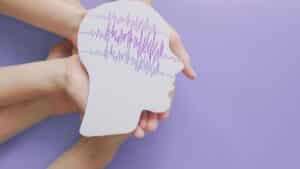
Causes of Seizures in Children
Seizures in children can arise from various causes, each with its unique set of triggers and risk factors. Low blood sugar, often due to irregular meals or diabetes management, can lead to seizures. Trauma, such as a head injury, is another common cause. At the same time, infections, especially in the central nervous system, can also trigger seizures. High fever, which may be linked to illnesses, can also result in seizures. More severe causes include stroke, brain tumours, and arteriovenous malformations (AVMs), abnormal tangles of brain blood vessels. Certain medications, mainly if not properly prescribed or managed, can lead to seizures, and there can also be genetic or hereditary factors in some cases. Understanding the potential causes is crucial for the diagnosis and effective treatment of children experiencing seizures.
- Low Sugar
- Trauma
- Infection
- High fever
- Stroke
- Brain tumour
- Brain AVM ( mesh of blood vessels)
- Certain medications
- Genetic or hereditary causes
First Aid for Seizures in Children
If you suspect that a child is having a seizure, follow these steps to provide appropriate first aid:
- Stay Calm: It's crucial to remain calm and reassure others around you. Most seizures in children are not life-threatening, and the child is likely to recover.
- Time It: Note the time when the seizure starts. This will help medical professionals if the seizure lasts longer than expected.
- Ensure Safety: Gently guide the child to a safe place, away from sharp objects or hazards. Lay them down on their side to prevent choking on saliva or vomit.
- Do Not Hold Them Down: Avoid trying to restrain the child's movements during the seizure. This can lead to injury and will not stop the seizure.
- Protect the Head: Place a soft cushion or something similar under the child's head to protect it from injury.
- Loosen Tight Clothing: If the child has tight clothing around their neck, such as a collar or tie, loosen it to ensure proper breathing.
- Do Not Put Anything in the Mouth: Contrary to popular belief, putting anything in the child's mouth during a seizure is unnecessary. This can be dangerous and may lead to injury.
- Stay with the Child: Remain with the child until they regain consciousness or until medical help arrives. After the seizure, the child may be disoriented and confused, and your presence can be reassuring.
- Comfort and Reassure: Once the seizure has ended, gently comfort and reassure the child. They may be confused and scared.
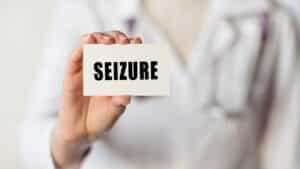
When to Seek Medical Attention From a Paediatric Neurologist
For any seizure, you should see a Paediatric neurologist. It is crucial to figure out the cause of seizures, and if needed, a seizure medicine should be started. Around 10% of children may have only one seizure and will not need medicated. This decision can be made after a neurologist has seen your child and done the workup essential to rule out other causes of seizures.
The following are scenarios where you should see a Neurologist sooner
The seizure lasts longer than five minutes.
Another seizure follows immediately after the first one.
The child has difficulty breathing or turns blue during the seizure.
The child is injured during the seizure.
The child has a known medical condition, such as diabetes, that may be related to the seizure.
The child has never had a seizure before.
Conclusion
Seizures in Children are scary to watch, but most of the time, they can be controlled easily without leaving any long-term deficits. The treatment and prevention of seizures always start with awareness of this disease and recognizing the underlying cause of the seizure. A child will need not only medical support but also psychological support from the parents and friends. Do not worry that your child may have epilepsy and face hurdles in life, as that is a baseless assumption. People with epilepsy have very productive lives and careers, just like someone with any other disease.
Natural Remedies for Anxiety: Calm Your Mind Naturally
Anxiety is a widespread problem. All of us have experienced this at some time in our lives, during examinations, job interviews, marriage proposals or even during sex. As a brain specialist in India, I often encourage patients to explore holistic and natural approaches before relying on medicines. In this blog, we’ll go through the natural remedies for anxiety, focusing on diet, nutrition, yoga and supplements.
Understand What is Anxiety with Dr Chandri Chugh?
 Let’s start with the ABCs. Anxiety is a feeling of restlessness and discomfort due to the fear of what may happen. It is primarily due to a fear of losing control, compounded by constant chatter of the mind that something terrible will happen and we won’t be able to deal with it. An anxious person may experience fast heart rate, pounding heartbeat, sweating, indigestion, frequent urination, diarrhoea, insomnia, anger, frustration, fidgeting, tremors and even depression at later stages.
Let’s start with the ABCs. Anxiety is a feeling of restlessness and discomfort due to the fear of what may happen. It is primarily due to a fear of losing control, compounded by constant chatter of the mind that something terrible will happen and we won’t be able to deal with it. An anxious person may experience fast heart rate, pounding heartbeat, sweating, indigestion, frequent urination, diarrhoea, insomnia, anger, frustration, fidgeting, tremors and even depression at later stages.
All of us have experienced anxiety at some time in our lives. Sometimes, anxiety is good to prepare us for the future. Still, it can be debilitating if our personality starts getting affected by it. Suppose you start having the symptoms mentioned above and feel anxious more often than not. In that case, I suggest you try some of the remedies mentioned below. Always remember, it is wise to talk to a specialist and tackle the problem head-on rather than wait.
Food and Diet for Natural Remedies for Anxiety
Anxiety, a common and overwhelming condition, affects our mental and physical well-being. While professional guidance is essential, there are Natural Remedies for Anxiety that can complement your anxiety management. One vital aspect of this holistic approach is your diet. The food you consume can profoundly influence your mood, stress, and anxiety. In this segment, we’ll explore the power of a balanced diet, rich in specific nutrients, and the avoidance of certain elements to alleviate anxiety. From emphasising unprocessed, natural foods to including anxiety-relieving components such as Omega-3 fatty acids and probiotics, your diet can be a valuable tool in your quest for a calmer and more relaxed state of mind. Join us as we delve into the food world and discover the natural remedies to help you combat anxiety effectively.
Balanced Diet
This is a given, but let’s stress it again. Make sure your diet is as natural as possible. Green vegetables, fruit, lean protein, legumes. Less grains, carbohydrate. Processed food needs to be avoided at all costs. Limit the sugar intake to treat anxiety. This means that we have eliminated excess sugar from our diets. Avoid juices, cola, soda, cocktails, junk food.
Omega-3 Fatty Acids
These are wonderful supplements that are very helpful for patients with anxiety. These are also very good for your brain and heart health. Fish such as salmon are rich in these omega-3 three fatty acids. In India, other varieties of fish, such as Indian Mackerel, Sardines, Salmon, Hilsa, and Rohu, are also rich in Omega three.
Probiotics
Emerging research suggests a connection between gut health and anxiety. Probiotic-rich foods are increasingly being recognised as essential not only for gut health but for brain health as well. In India, the fermented foods used are curd, kanji (purple fermented spicy drink), dhokla, idlis, dosa, and fermented rice batter.
Limit Alcohol and Caffeine
Excessive alcohol and caffeine consumption can increase anxiety symptoms. Be mindful of your intake and consider alternatives like herbal teas or decaffeinated options. Chamomile teas are effective in dealing with anxiety.
Supplements of Remedies for Anxiety
Supplements can restore tranquillity and balance in the quest for Natural Remedies for Anxiety. Two essential supplements that promise Remedies for Anxiety are magnesium and vitamins B6 and B12. Magnesium, an essential mineral, extends its therapeutic influence to anxiety and blood pressure regulation, muscle twitching, and insomnia control. It assumes the role of a calmative for the nervous system. You can harness the benefits of magnesium from dietary sources such as nuts, seeds, and vegetables or consider magnesium supplements under the guidance of a specialist.
On the other hand, vitamins B6 and B12 emerge as pivotal contributors to brain health and mood regulation. These vitamins facilitate the production of brain-calming chemicals, integral to proper brain function and anxiety management. Whole grains, lean meats, and leafy greens are rich sources of these mood-regulating vitamins. In this section, we delve into these supplements, uncovering their potential to alleviate anxiety and restore peace of mind.
Magnesium
Magnesium is an essential mineral that helps control anxiety, blood pressure, muscle twitching, and insomnia. It plays a role in calming the nervous system. You can find magnesium in foods like nuts, seeds, and veggies or consider magnesium supplements under the guidance of a specialist.
Vitamins B6 and B12
Vitamins B6 and B12 are essential for brain health and mood regulation. These vitamins help produce brain-calming chemicals essential for proper brain functioning and control of anxiety. These vitamins are in whole grains, lean meats, and leafy greens.
Yoga and Pranayama for Remedies for Anxiety
Yoga is a 5000-year-old practice or even older. It has been well established that yoga offers many spiritual and mental benefits besides physical benefits. Incorporating 30 minutes of yoga daily can do wonders for your body and keep you smiling peacefully.
Deep Breathing and Pranayama
These can be done in various ways and have been referred to as cardiac coherence breathing or boxed breathing. Whichever jargon you prefer, follow these simple steps to start your practice. Breathe in for 4 seconds, hold for 4 seconds and then let go for 6 seconds. Always be with your breath and try not to wander off in your thoughts. This practice done for ten minutes is very helpful in bringing the focus back to what matters…you.
Yoga Poses
Suryanamaskar is the be-all and end-all posture for most ailments that you may face in your life. Start with 5 to 9 cycles daily and then progress slowly. You can also try Child’s Pose, Downward-Facing Dog, and Warrior II, which can help release tension and reduce stress. You don’t need to be a yoga expert; even basic poses can be effective.
Mindfulness Meditation
Mindfulness meditation is a crucial component of yoga that involves staying present and non-judgmentally observing your thoughts and sensations. Regular practice can improve emotional regulation and reduce anxiety over time.
Conclusion
While natural remedies for anxiety can be beneficial, it’s essential to remember that everyone’s experience with anxiety is unique. What works for one person may not work for another. It’s also important to consult with a healthcare provider before making significant dietary changes or adding supplements to your routine, especially if you have existing medical conditions or are taking medications.
Incorporating these natural remedies alongside professional guidance can be a powerful combination in managing anxiety. Remember, the journey to inner peace is personal, and it’s okay to seek help and explore various strategies to find what works best for you. You can take positive steps toward a calmer, more balanced life by nurturing your mental and emotional well-being.
Migraine Medicine: What a patient should know
Migraine Medications Introduction
Migraines can be incredibly debilitating, affecting millions of people worldwide. If you’re one of the many who suffer from these throbbing headaches, you’re not alone. Migraine headaches are one of the most common headaches, which start from one side of the head or the eye and then spread all over. They may be accompanied by nausea, vomiting, neurological symptoms like tingling, paraesthesia, numbness, weakness, and other gastrointestinal symptoms. Migraine medications depends upon the correct diagnosis of patient-specific factors such as age, comorbidities, frequency of headaches, association of aura symptoms, and occupation. In this blog, we’ll explore different migraine medications in simple language so you can make informed decisions about your treatment options.
Types of Migraine Medication
Medications are divided into two categories:
acute and abortive medication and preventive or prophylactic medications. Both play a specific and considerable role in stopping and preventing migraine headaches.
Acute Migraine Medication
These are taken when you already have a migraine attack to relieve the pain and associated symptoms.
Over-the-counter (OTC) Pain Relievers
These belong to the category of NSAIDs, which are painkillers and include drugs like ibuprofen, aspirin, or naproxen. These drugs can help alleviate mild to moderate migraine pain. However, they may not work for everyone and should be used cautiously to avoid overuse. If taken for more than ten days in a month, they may result in what is known as medication overuse headaches.
Triptans
These drugs work on serotonin receptors in the brain nerves and abort the pain transmission pathways. They work by narrowing blood vessels in the brain and reducing pain signals. Commonly used triptans are sumatriptan, rizatriptan, and eletriptan. Triptans can be very effective but should be used under a doctor’s guidance. These medicines are usually avoided in patients with cardiovascular risk factors and should be taken only under supervision. Other administration forms, like subcutaneous injections and intranasal sprays, are also available for patients with intense nausea and headaches who cannot accept oral medication.
Preventive Migraine Medication
This class of medication is used for patients with frequent headaches and helps prevent the onset of headaches. These are taken daily and are divided into the following categories:
Tricyclic compounds and neurotransmitter modulators
Drugs like amitriptyline or venlafaxine can help prevent migraines. They work by altering the brain’s chemical balance. These drugs are helpful in many patients who may have underlying anxiety, psychiatric disorders, or depression.
Beta-Blockers
Medications like propranolol are often used to manage migraines. They help relax blood vessels and reduce the frequency of attacks. These drugs have been well-studied and considered safe for most patients. Caution is exercised for patients with asthma, breathing problems, thyroid diseases, and depression.
Topiramate or valproate
Drugs like topiramate or valproate may be prescribed for migraine prevention. They affect the brain’s electrical activity and can be effective for some individuals. These drugs may cause cognitive slowing and weight gain (especially valproate). Caution is exercised for pregnant patients.
CGRP Inhibitors
These newer medications, such as erenumab and fremanezumab, target a protein involved in migraine development. They are often used when other preventive options fail.
Rescue Migraine Medication
In severe cases, the following drugs may be used. However, these may not be available in all countries, and their use may also be restricted due to abuse potential. It is best to discuss with your Neurologist about rescue medicines mentioned below.
Ergotamines
These are older medications that can be effective but have more side effects and are used less frequently today.
Steroids:
In some cases, short-term use of steroids like prednisone and dexamethasone may be recommended to break a severe migraine cycle. Steroids have also been shown to prevent migraine relapse; however, their use remains limited due to multiple side effects.
Choosing the Right Migraine Medication
When choosing the migraine medication, it is essential to confirm the diagnosis. Elaborate history with recognition of migraine triggers is significant. Your doctor may recommend preventive Migraine medication if you have frequent and severe migraines. For occasional migraines, acute medications may be sufficient.
Medical History
Your overall health, other medical conditions, and current medications can influence which migraine medication is safest and most effective for you. Patients with diabetes, high blood pressure, hypothyroidism, and mental and psychiatric patients should discuss their conditions with the Neurologist. Pregnancy and lactation also determine the choice of drugs.
As migraine medicines need to be used over an extended period, it is essential to discuss the side effects of these drugs. All drugs may not be suitable for you. Patients engaged in day jobs have different drug preferences than those who have night jobs. A detailed discussion with your Neurologist will help.
Cost and Accessibility
Insurance coverage and medication costs can vary. Check with your insurance provider and discuss affordable options with your doctor.
Patient Preferences
Your preferences and comfort with the chosen medication also matter. Some people prefer pills, while others may prefer injections or nasal sprays.
Conclusion
Migraines can be incredibly disruptive, but you don’t have to suffer in silence. With various migraine medication available, there are options to help you manage and prevent migraine attacks. Work closely with your Neurologist to find the proper medication or combination of treatments that best suit your needs.
Remember, managing migraines is a journey, and what works for one person may not work for another. Stay patient and keep an open line of communication with your healthcare team to ensure you receive the best possible care for your migraine condition.
When to take your child to see a Pediatric Neurologist?
When to take your child to see a Pediatric Neurologist?
As parents, we are always concerned about our children’s health and well-being. When it comes to their neurological health, it’s important to be aware of any signs or symptoms that may require the attention of a pediatric neurologist. In this informative blog post, Dr. Chandril Chugh, a leading pediatric neurologist in Patna, will provide expert guidance on when to consider taking your child to see a neurologist. With his vast experience and dedication to pediatric neurological care, Dr. Chugh aims to help parents make informed decisions and ensure the best possible outcomes for their children.
Seizures
Seizures can be a distressing experience for both children and their parents. If your child experiences a seizure or has recurrent seizures, it is crucial to seek immediate medical attention. Consulting a pediatric neurologist, such as Dr. Chandril Chugh, is essential for a comprehensive evaluation and effective management of seizures in children.
Dr. Chandril Chugh, a highly skilled and experienced pediatric neurologist in Patna, understands the complexities surrounding seizures and their impact on a child’s well-being. With his expertise in diagnosing and managing seizures, he can provide the necessary guidance and support to help your child lead a fulfilling life.In addition to his medical expertise, Dr. Chandril Chugh understands the emotional impact that seizures can have on both the child and the family. He provides compassionate care, offering support and guidance to help you navigate the challenges associated with managing seizures. You can trust that Dr. Chandril Chugh will work collaboratively with you and your child to optimize their neurological health and enhance their quality of life.
If your child experiences a seizure or has a history of recurrent seizures, do not hesitate to reach out to Dr. Chandril Chugh, the best pediatric neurologist in Patna. With his specialized knowledge and dedication to providing exceptional care, he will help you understand the seizures, determine their cause, and develop an appropriate treatment plan that prioritizes your child’s well-being.
Developmental Delays
If your child is experiencing significant delays in reaching developmental milestones, such as motor skills, speech and language, or cognitive abilities, it is crucial to seek professional evaluation and support. A pediatric neurologist, like Dr. Chandril Chugh, specializes in assessing and identifying potential underlying neurological issues that may contribute to developmental delays. Dr. Chandril Chugh, renowned as the best pediatric neurologist in Patna, has extensive experience in pediatric neurology and a deep understanding of the intricate relationship between the nervous system and developmental processes. When you bring your child to Dr. Chandril Chugh, he will conduct a thorough evaluation to assess their developmental progress and identify any areas of concern.
During the evaluation, Dr. Chandril Chugh will carefully review your child’s medical history and conduct comprehensive neurological examinations. These evaluations may include assessments of motor skills, language development, cognitive abilities, and other relevant domains. Additionally, Dr. Chandril Chugh may request further tests or screenings, such as genetic testing or neuroimaging, to gain a comprehensive understanding of your child’s neurodevelopmental profile.
Headaches
Frequent and severe headaches in children should never be overlooked, particularly when accompanied by additional symptoms like vomiting, dizziness, or changes in vision. It is important to consult a pediatric neurologist who can thoroughly investigate the underlying cause of these headaches and provide appropriate management strategies. Dr. Chandril Chugh, a trusted pediatric neurologist in Patna, specializes in evaluating and treating children with headaches.

When you bring your child to Dr. Chandril Chugh, he will conduct a comprehensive evaluation to understand the nature and potential triggers of their headaches. This evaluation may involve a detailed medical history review, neurological examinations, and, if necessary, further diagnostic tests such as imaging studies or laboratory analyses. Dr. Chandril Chugh’s expertise in pediatric neurology enables him to accurately diagnose the cause of your child’s headaches.
Neurological Disorders:
Frequent and severe headaches in children should never be overlooked, particularly when accompanied by additional symptoms like vomiting, dizziness, or changes in vision. It is important to consult a pediatric neurologist who can thoroughly investigate the underlying cause of these headaches and provide appropriate management strategies. Dr. Chandril Chugh, a trusted pediatric neurologist in Patna, specializes in evaluating and treating children with headaches.
When you bring your child to Dr. Chandril Chugh, he will conduct a comprehensive evaluation to understand the nature and potential triggers of their headaches. This evaluation may involve a detailed medical history review, neurological examinations, and, if necessary, further diagnostic tests such as imaging studies or laboratory analyses. Dr. Chandril Chugh’s expertise in pediatric neurology enables him to accurately diagnose the cause of your child’s headaches.
Abnormal Movements or Tremors
If your child exhibits involuntary movements, tremors, or other abnormal motor symptoms, it is important to consult a pediatric neurologist for a thorough evaluation and appropriate management strategies. Dr. Chandril Chugh, a renowned pediatric neurologist in Patna, specializes in assessing and addressing motor abnormalities in children.
When you bring your child to Dr. Chandril Chugh, he will carefully evaluate their motor symptoms through a comprehensive examination. He will assess the nature and frequency of the involuntary movements, tremors, or other motor abnormalities, and inquire about any accompanying symptoms or relevant medical history. Based on his expertise and knowledge in pediatric neurology, he will determine the most appropriate diagnostic tests, if necessary, to further investigate the underlying cause of these motor abnormalities. Dr. Chandril Chugh understands the unique challenges that children with motor abnormalities face, and he approaches each case with sensitivity and personalized care. He will explain the evaluation process to you and your child, ensuring that you feel comfortable and informed every step of the way. Through his extensive experience, he can distinguish between various neurological conditions and provide an accurate diagnosis.
Neurodevelopmental Assessments
When concerns arise about your child’s behavior, learning abilities, or social interactions, seeking the expertise of a pediatric neurologist is crucial. Dr. Chandril Chugh, a renowned pediatric neurologist in Patna, specializes in conducting comprehensive neurodevelopmental assessments to evaluate cognitive, behavioral, and emotional functioning in children.

Understanding the intricacies of your child’s neurodevelopment is essential for identifying any underlying neurological factors that may contribute to their challenges. Dr. Chandril Chugh employs a multidimensional approach to assess various aspects of your child’s cognitive abilities, including memory, attention, problem-solving skills, and language development. He also evaluates their behavioral and emotional functioning, taking into account factors such as social interactions, emotional regulation, and adaptive skills.
During the neurodevelopmental assessment, Dr. Chandril Chugh will engage with your child in a supportive and child-friendly environment. He utilizes a range of specialized tools and techniques to gather comprehensive information about your child’s strengths and areas of concern. These may include standardized assessments, observations, interviews with parents and caregivers, and collaboration with other professionals involved in your child’s care, such as teachers or therapists.
Genetic or Metabolic Disorders
If your child has a known or suspected genetic or metabolic disorder that affects the nervous system, seeking the specialized care of a pediatric neurologist is paramount. Dr. Chandril Chugh, a highly skilled and experienced pediatric neurologist in Patna, is dedicated to providing comprehensive and individualized care for children with such conditions.
When it comes to genetic or metabolic disorders impacting the nervous system, early detection and ongoing management are vital. Dr. Chandril Chugh works closely with patients and their families to understand the unique challenges posed by these conditions. With his expertise in pediatric neurology, he offers a compassionate and comprehensive approach to care, aiming to optimize your child’s neurological health and overall well-being.
During the initial evaluation, Dr. Chandril Chugh will carefully assess your child’s medical history, symptoms, and any relevant genetic or metabolic factors. He may collaborate with geneticists, metabolic specialists, and other healthcare professionals to ensure a thorough understanding of your child’s condition. By leveraging advanced diagnostic tools and techniques, Dr. Chandril Chugh can provide an accurate diagnosis and establish a baseline for monitoring your child’s neurological health.
Traumatic Brain Injury (TBI)
When your child has experienced a head injury due to sports, accidents, or other trauma, taking prompt action and seeking the expertise of a pediatric neurologist is crucial. Dr. Chandril Chugh, a renowned pediatric neurologist in Patna, specializes in assessing and managing head injuries in children, prioritizing their neurological healing and overall well-being.
Head injuries can range from mild concussions to more severe traumatic brain injuries (TBIs). Regardless of the severity, it is essential to have a professional evaluation to accurately assess the extent of the injury and monitor your child’s recovery progress. Dr. Chandril Chugh brings extensive experience and expertise in pediatric neurology to provide comprehensive care for children who have experienced head injuries.
During the initial evaluation, Dr. Chandril Chugh will conduct a thorough assessment of your child’s symptoms, medical history, and the circumstances surrounding the head injury. He may order diagnostic tests such as imaging scans, including CT scans or MRIs, to evaluate the extent of the injury and identify any potential complications.
When it comes to your child’s neurological health
Dr. Chandril Chugh, the best pediatric neurologist in Patna, is dedicated to providing comprehensive care, accurate diagnoses, and effective treatment plans. Don’t hesitate to seek his expertise if your child requires specialized neurological evaluation and management. Your child’s well-being is our priority, and we are here to support you every step of the way.

